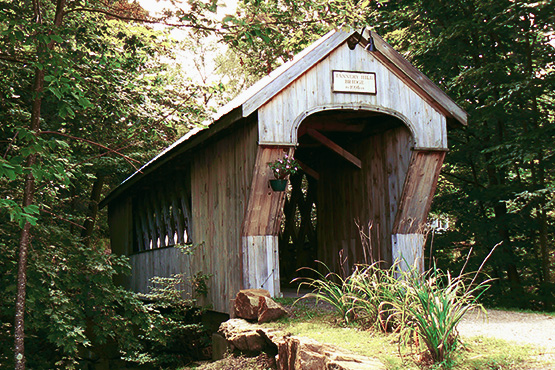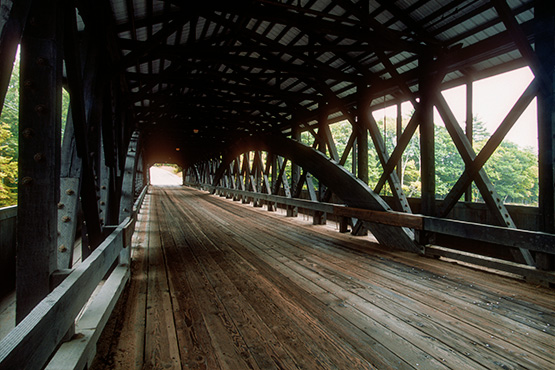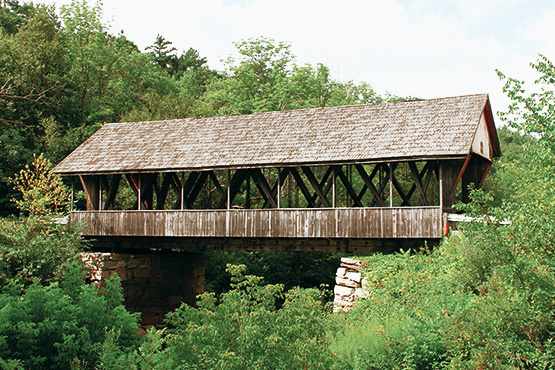Take a tour of the Lakes Region structures
New Hampshire’s Lakes Region is a remarkable place with spectacular lake views and plenty of authentic covered bridges for the family to explore. These covered bridges have been part of the history of New Hampshire towns for many decades and are still standing today. Covered bridges are 19-century engineering masterpieces, and only about 750 remain in the United States. New Hampshire has 54 of these remarkable structures and the Lakes Region provides a great scenic driving tour. Here are a few Lakes Region covered bridges to explore, as you tour imagine yourself crossing in a horse-and-buggy.

The Durgin Bridge, Sandwich
Built in 1869, the Durgin Bridge was built by Jacob Berry in Sandwich, crossing the Cold River. The bridge is named for James Holmes Durgin who ran a grist mill nearby. The bridge rests on concrete-faced stone. It is the fourth bridge known to be standing at this site; the first three had been washed away by spring floods. The first bridge constructed at this site was built to replace the ford, located nearly a quarter mile upstream. In 1983, the Durgin Bridge was listed on the National Register of Historic Places.
Squam River Bridge, Ashland
Squam River Bridge is located on River Street in Ashland and crosses Squam River. This covered bridge, built in 1990, replaces a steel and concrete bridge that was condemned by the state. After the condemnation, the state proposed a two-lane steel bridge for this site. The citizens of Ashland, however, voted to fund one-lane covered bridge. This bridge was built by Milton S. Graton and Sons of Ashland.
Tannery Hill Bridge, Gilford
Tannery Hill Bridge in Gilford is a foot bridge that was built in the center of Gilford to enable the townspeople to cross a deep gorge to get to the town offices. This bridge was built by Tim Andrews in 1995. It is named for the tannery that once stood in the area.

Whittier Bridge, Ossipee
Whittier Bridge in Ossipee, is a bridge over the Bearcamp River. This is the fifth bridge to be located at this site. The first bridge was a crude open timber bridge, according to town records. A restoration began in November 1982 by Milton Graton and Sons and was completed in August 1983. The sides of the Whittier Bridge were opened as part of the restoration. The bridge is closed to vehicle traffic.
Sulphite Railroad Bridge, Franklin
Sulphite Railroad Bridge also known as the Upside-Down Covered Bridge is a historical bridge in Franklin. This bridge was built in 1897 to carry the tracks of the Boston and Maine Railroad across the Winnipesaukee River between Franklin and Tilton. It is believed to be the only surviving “upside-down” covered railroad bridge and was named Sulphite because of the large amounts of sulfur transported over the rail lines for use by the giant pulp and paper mills not far from the bridge.

Nothing demonstrates the charm of New Hampshire’s villages like a covered bridge. Take a drive through the country roads of the Granite State to see the different historic covered bridges.